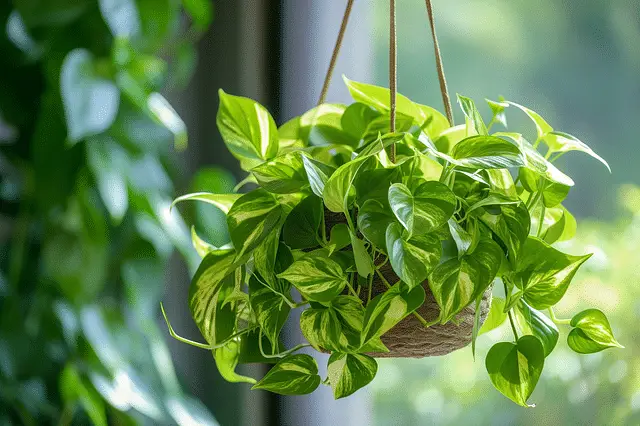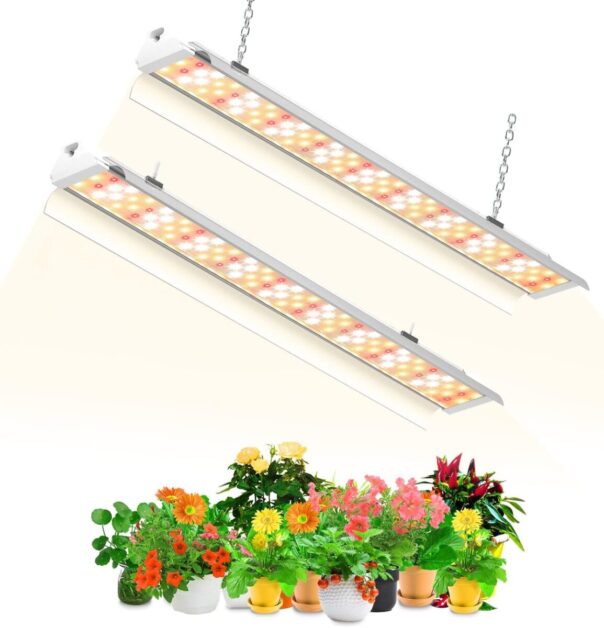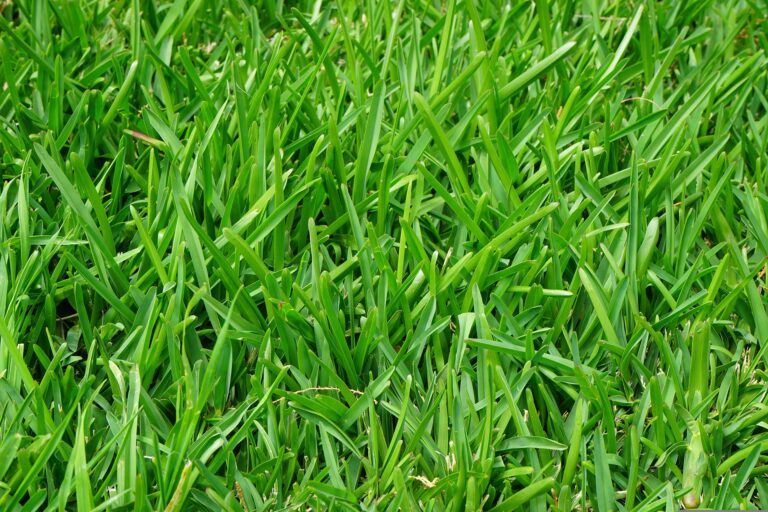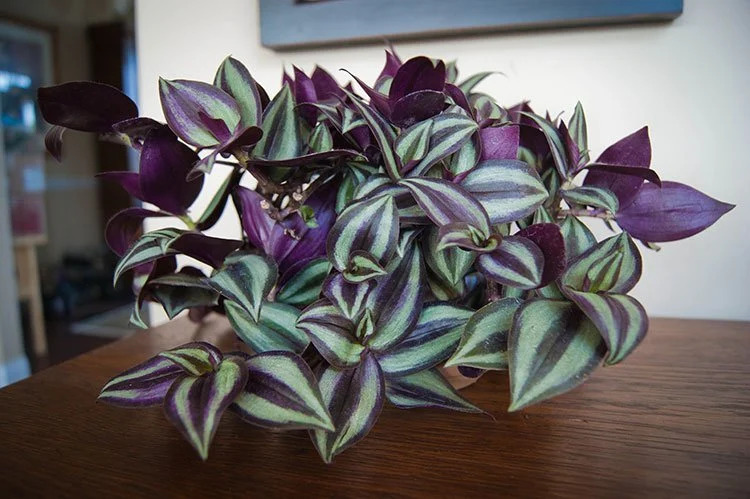Effortless Techniques for Growing Pothos in Water
Are you looking to add a touch of green to your space effortlessly? Pothos, with its vibrant leaves and easy-going nature, might just be the perfect plant for you. In this blog, we delve into the art of growing Pothos in water, a simple yet rewarding technique that even beginners can master. From choosing the right container to caring for your plant, we’ve got you covered with expert tips and tricks. Discover how to nurture your Pothos to thrive in water and bring a breath of fresh air into your home. Get ready to transform your space with lush, thriving greenery!
Table of Contents
The Benefits of Growing Pothos in Water
Growing pothos in water offers a plethora of benefits for plant enthusiasts.

- Soil-Free Convenience: By growing pothos in water, you eliminate the need for soil. This is particularly advantageous for those who lack gardening space or prefer low-maintenance plants. Urban dwellers, apartment owners, and beginners can easily enjoy the beauty of pothos without dealing with soil.
- Visual Monitoring: Water propagation allows you to closely monitor the plant’s growth and root development. The transparent container provides a visual display, making it both educational and aesthetically pleasing. You can observe root growth and adjust water levels accordingly.
- Faster Growth: Pothos grown in water often experiences faster growth. With direct access to water and nutrients, the plant can thrive and develop new roots more rapidly than when grown in soil. This accelerated growth contributes to a lush and vibrant display.
- Robust Water Roots: Water roots tend to be healthier and more robust. They adapt well to their aquatic environment, resulting in a stronger and more resilient plant overall. Healthy roots support vigorous foliage growth, leading to larger and more vibrant leaves.
So, don’t hesitate to give water propagation a try and experience the numerous benefits it has to offer in your journey of growing pothos.
Understanding the Water Requirements of Pothos Plants
Pothos plants, also known as devil’s ivy, are popular houseplants known for their ability to thrive in various conditions. When it comes to water requirements, pothos plants have unique needs that differ from other indoor plants. Understanding these requirements is crucial in ensuring the health and vitality of your pothos plants.
One common question regarding the water requirements of pothos plants is, “How often should I water my pothos in water?”
Unlike soil-grown plants, pothos plants in water have a slightly different watering schedule. It is essential to maintain the water level, ensuring that the roots are consistently submerged, but not fully immersed. It is recommended to check the water level every few days and top it up accordingly. However, overwatering should be avoided as it may lead to root rot and other issues.
Another FAQ that often arises is, “What are the signs of underwatering pothos plants in water?”
While pothos plants are relatively tolerant of underwatering, it is essential to watch for some common signs that indicate your plant needs more water. Drooping leaves, yellowing or browning of the leaves, and a general wilting appearance are indications of dehydration. In such cases, adding fresh water to the container and ensuring the roots are properly submerged will help revive your pothos plant.
The following table explains the water requirements of pothos plants:
| Watering Aspect | Frequency | Quantity | Additional Notes |
|---|---|---|---|
| 1. Regular Watering | Every 1-2 weeks | 1 cup per plant | Adjust frequency based on soil moisture and environmental conditions. |
| 2. Deep Watering | When top inch of soil is dry | 2-3 cups per plant | Ensure thorough saturation of the root zone. |
| 3. Seasonal Adjustments | More frequent in summer | Increase by 20-30% during warmer months | Monitor moisture needs during different seasons. |
| 4. Soil Moisture Check | Check soil moisture regularly | Adjust as needed | Use finger test or moisture meters to assess soil dampness. |
| 5. Humidity Consideration | Moderate to high humidity | Regular misting or use a humidity tray | Pothos thrives in higher humidity environments. |
Choosing the Right Container for Water Propagation
When it comes to choosing the right container for water propagation of pothos plants, there are a few key factors to consider.
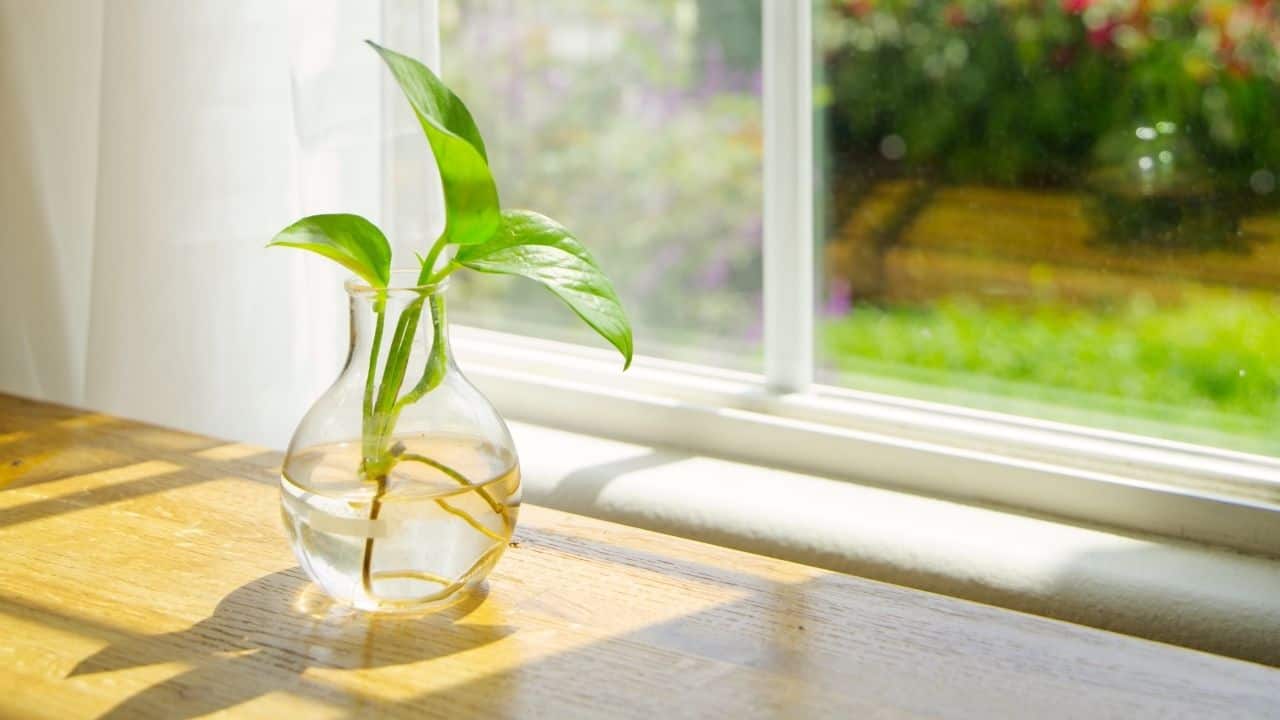
Selecting a Suitable Container:
- Choose a container made of glass, plastic, or ceramic, known for their durability and water resistance.
- Ensure the container is watertight and does not leak or spill.
- Opt for a container with a wide opening to accommodate the cuttings and allow for easy access.
Consider Container Size:
- Avoid choosing a container that is too large, as it can lead to stagnant water and potential problems like root rot.
- Similarly, avoid containers that are too small, as they may not provide enough space for root development.
- Aim for a container that is just slightly larger than the cuttings, providing them with adequate room to grow and thrive.
By following these steps, you can select an appropriate container for propagating cuttings, ensuring optimal conditions for root development and successful plant growth.
Preparing the Water for Pothos Propagation
To ensure successful propagation of pothos in water, it is crucial to prepare the water properly. This involves taking a few simple steps to create an ideal environment for root development.
One common question that arises is, “Can I use tap water for pothos propagation?”
While it is possible to use tap water, it is important to consider the quality of your water supply. Tap water often contains chlorine and other chemicals that can be detrimental to plant growth.
:max_bytes(150000):strip_icc()/GettyImages-1387108411-949f69a120274f0bbe730212b1d9a808.jpg)
To overcome this, you can leave your tap water sitting in an open container for 24-48 hours, allowing the chlorine to dissipate naturally. Alternatively, you can use filtered or distilled water, which eliminates harmful substances and provides a cleaner environment for your pothos cuttings.
Another frequently asked question is, “Should I change the water regularly during propagation?”
The answer is yes, changing the water at regular intervals is crucial for the health of your pothos cuttings. Stagnant water can become a breeding ground for harmful bacteria and algae, which can lead to rot or other diseases. It is recommended to change the water every week or whenever it starts to appear cloudy or smell unpleasant.
When changing the water, it is important to handle the pothos cuttings with care to avoid damaging the fragile roots that may have started to develop. By maintaining clean and fresh water, you are providing the best possible conditions for your pothos cuttings to establish strong and healthy roots.
Selecting Healthy Pothos Cuttings for Water Propagation
When selecting cuttings for water propagation, it is crucial to choose healthy specimens to ensure successful root development. Look for Pothos cuttings that have vibrant green leaves and sturdy stems. Avoid any cuttings that show signs of wilting, discoloration, or damage. It is also important to select cuttings with at least two nodes, as these are the areas where roots will emerge.
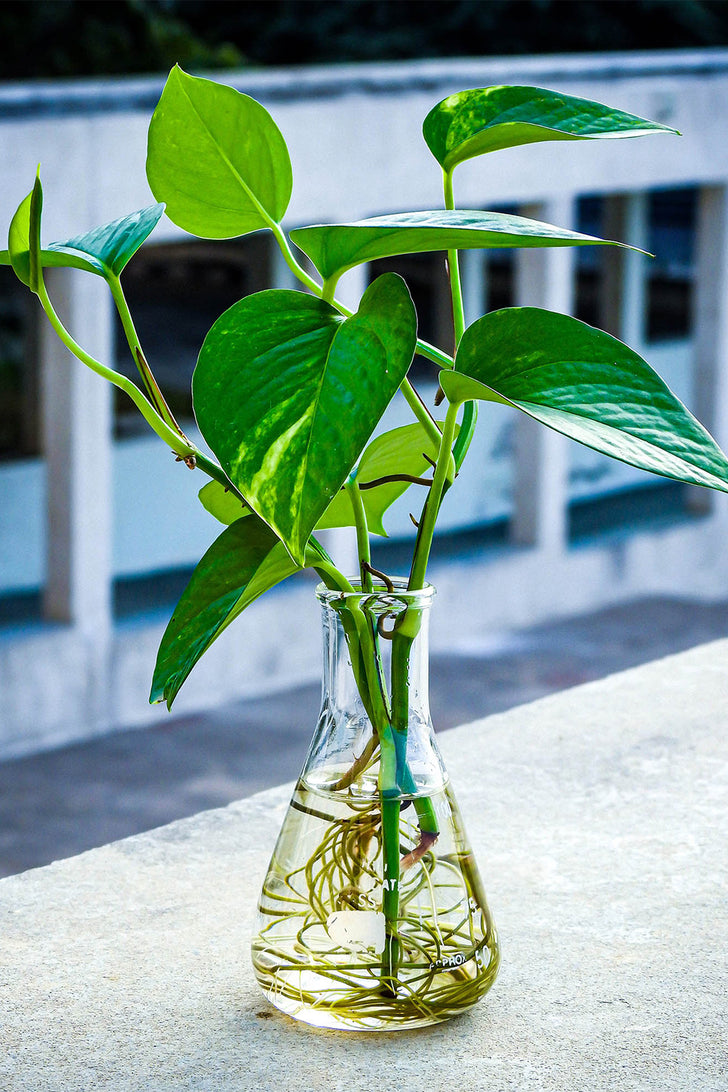
- Nodes: Nodes are small bumps along the stem where leaves attach. More nodes mean greater potential for root development. When choosing cuttings, prioritize those with multiple nodes.
- Health Inspection:
- Firmness Test: Gently squeeze the cutting or scratch the stem’s surface with your fingernail. If it feels firm and resilient, it’s likely healthy.
- Avoid Softness: A soft or mushy stem may indicate rot or disease. Discard such cuttings.
- Root Examination:
- Look at the roots where the cuttings was originally severed. Healthy roots indicate a healthy cutting.
- Robust roots contribute to successful propagation and thriving plants.
Remember, taking the time to select healthy pothos cuttings ensures a smoother propagation process and sets the stage for robust growth. Happy gardening! 🌱
Properly Trimming Pothos Cuttings for Water Propagation
When it comes to properly trimming pothos cuttings for water propagation, there are a few key steps to keep in mind.

Choose cuttings from a well-established pothos plant.
Opt for stems that are approximately 4-6 inches long.
Inspect the stems for any signs of disease or damage.
Use clean, sterilized pruning shears to make a clean cut just below a node (where the leaf meets the stem). This node is crucial for root development.
Remove any lower leaves from the cutting.
Leave only a few leaves at the top to prevent rotting in the water.
Trimming long vines to a manageable size is also recommended.
Place the trimmed pothos cuttings into a container of water.
Ensure that the nodes (where you made the cuts) are submerged.
Use a clear container to allow for visual monitoring of root growth.
Change the water regularly (about once a week) to prevent stagnation.
Roots will eventually emerge from the nodes.
Once the roots are well-developed (several inches long), you can transplant the cutting into soil or continue growing it in water.
Using glass containers for my plants has elevated the aesthetic appeal of my indoor space while providing a unique and stylish display for my greenery. The transparency of the glass allows me to admire the intricate root systems and soil composition of my plants, adding a fascinating visual element to their growth process. However, I’ve had to be cautious about drainage and watering, as most glass containers lack proper drainage holes, which can lead to overwatering and root rot if not managed carefully. Overall, the elegance and versatility of glass containers make them a charming addition to any plant collection, but attention to plant care and maintenance is essential to ensure their health and longevity.
- Aesthetic Appeal: Glass containers add a stylish and modern touch to any indoor space, enhancing the overall decor.
- Visibility: The transparent nature of glass allows for easy visibility of the plants’ roots and soil, making it easier to monitor their health and growth.
- Versatility: Glass containers come in various shapes and sizes, offering versatility in design and allowing for creative plant arrangements.
- Durability: High-quality glass containers are durable and long-lasting, providing a stable environment for plants.
- Easy to Clean: Glass is non-porous and easy to clean, making maintenance hassle-free and ensuring a pristine display.
- Fragility: Glass containers are fragile and prone to breakage if mishandled, posing a risk of injury and potential damage to the plants.
- Limited Drainage: Most glass containers lack proper drainage holes, leading to potential waterlogging and root rot if not managed carefully.
- Sunlight Exposure: Direct sunlight through glass containers can amplify heat and potentially scorch delicate plants, requiring careful placement to avoid overheating.
- Condensation: Glass containers may experience condensation buildup, especially in humid environments, which can affect plant health and create a damp environment conducive to mold or fungal growth.
- Weight: Glass containers can be heavy, especially when filled with soil and plants, making them difficult to move or reposition.
Inserting Pothos Cuttings into Water for Rooting
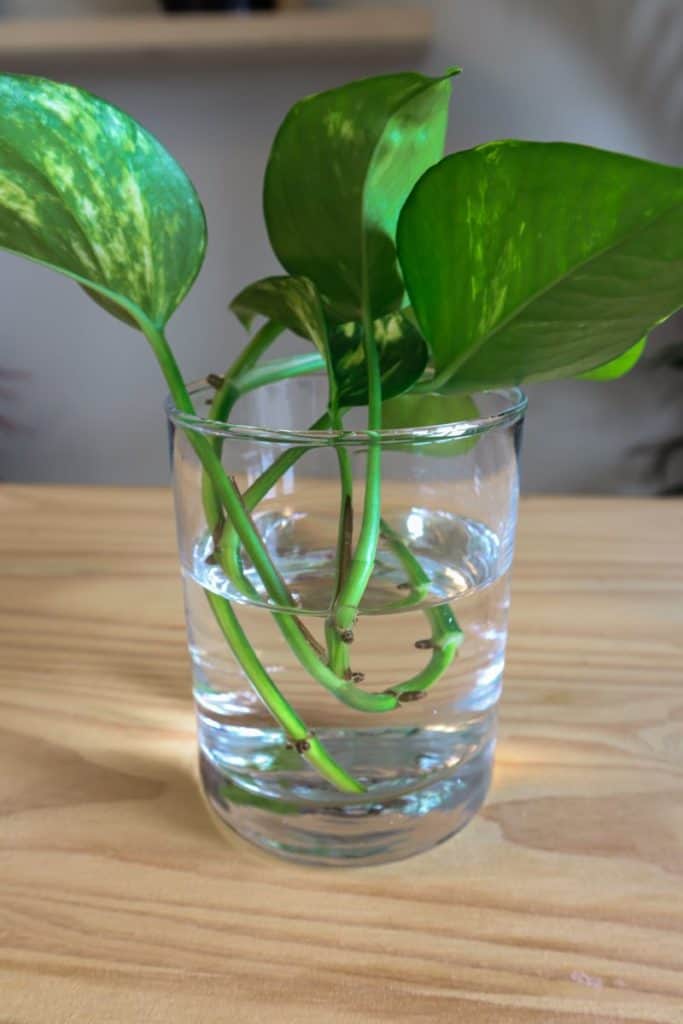
Inserting Pothos cuttings into water is a crucial step in propagating these beautiful plants.
Prepare the Cuttings:
- Carefully select healthy Pothos cuttings, ensuring they have at least one node where the leaf meets the stem.
- Trim the cuttings to the desired length, typically around 4-6 inches.
Fill a Container with Water:
- Choose a clean container and fill it with water.
- Ensure that the water level is sufficient to submerge at least one node of each cutting.
Insert the Cuttings:
- Gently place the cuttings into the water-filled container, ensuring that at least one node is submerged.
- Provide enough space between the cuttings to allow for proper aeration and growth, avoiding overcrowding.
Consider Leaf Removal:
- Decide whether to remove lower leaves from the cuttings before inserting them into water.
- Some sources recommend removing a few lower leaves, while others suggest leaving them intact for nutrient absorption.
- Avoid submerging any leaves in water to prevent rotting.
By following these guidelines, you can give your Pothos cuttings the best chance at successful rooting in water, setting them on a path to thrive and beautify your indoor space.
Maintaining the Ideal Water Conditions for Pothos Growth
It is crucial to maintain the ideal water conditions for optimal Pothos growth. Water is the primary medium for this type of propagation, and providing the appropriate conditions will ensure healthy root development and overall plant growth. Here are a few unique FAQs based on information not previously discussed in the article:
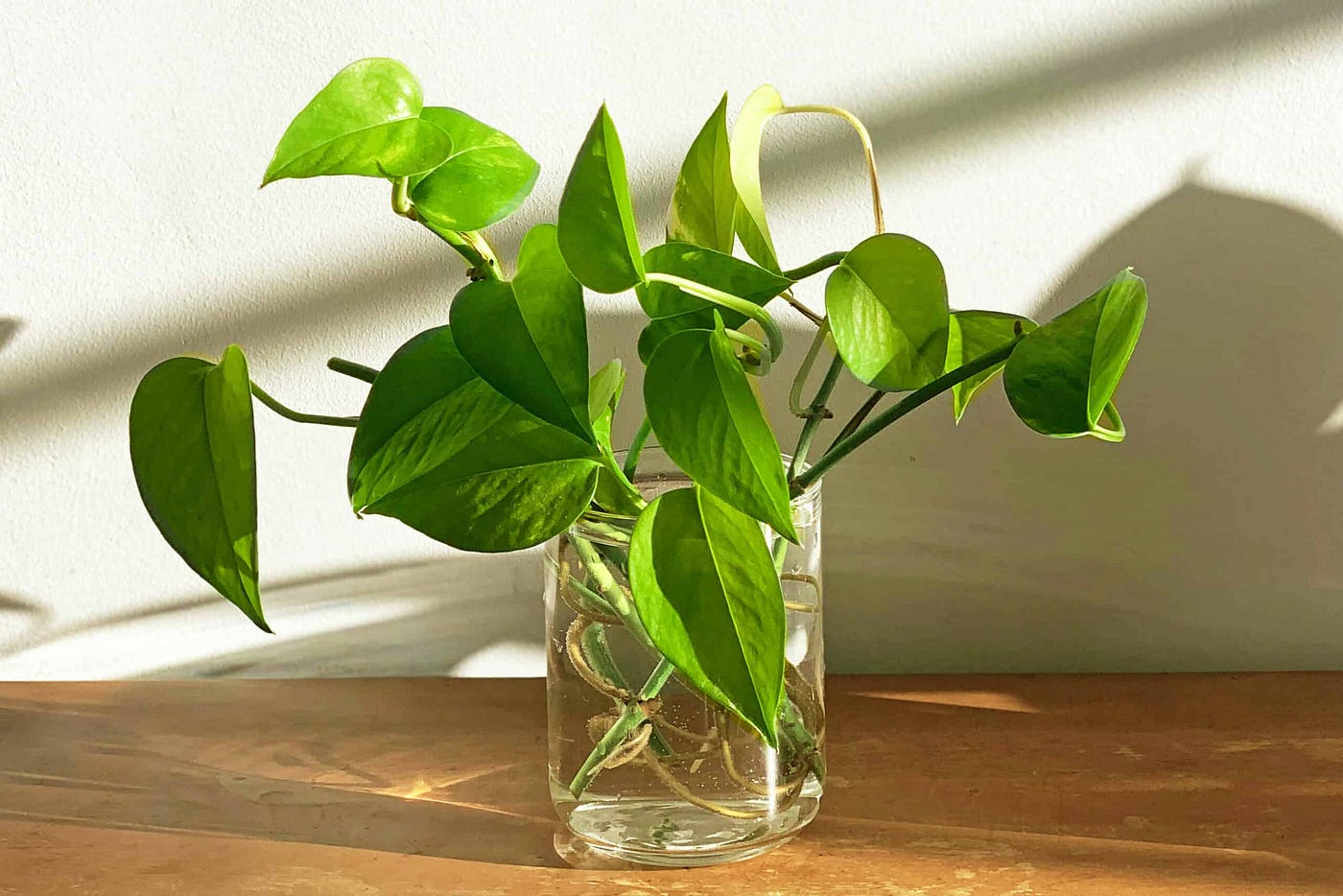
1. Can I use tap water for Pothos propagation in water?
Using tap water for Pothos propagation is generally acceptable. However, it is important to consider the quality of water in your area. Tap water often contains chemicals like chlorine and fluoride, which can hinder root growth. To combat this, you can let the water sit for 24-48 hours to allow these chemicals to dissipate or use a water dechlorinator to neutralize them.
2. Is it necessary to change the water regularly during Pothos propagation?
Yes, it is advisable to change the water regularly during Pothos propagation. Stagnant water can create a breeding ground for bacteria, which can lead to rot and other plant diseases. Changing the water every 1-2 weeks will help maintain a clean environment for the roots. Additionally, this provides an opportunity to replenish necessary nutrients and ensure adequate oxygen supply, promoting healthy growth.
Understanding and maintaining the ideal water conditions for Pothos growth is a fundamental aspect of successful propagation. By considering factors such as tap water quality and regular water changes, you can create an optimal environment that supports the development of strong and vibrant Pothos plants.
Providing Sufficient Light for Pothos in Water
Proper lighting is crucial for the successful growth of pothos plants in water. Since these plants are native to tropical rainforests where they receive filtered sunlight, replicating similar light conditions is essential.
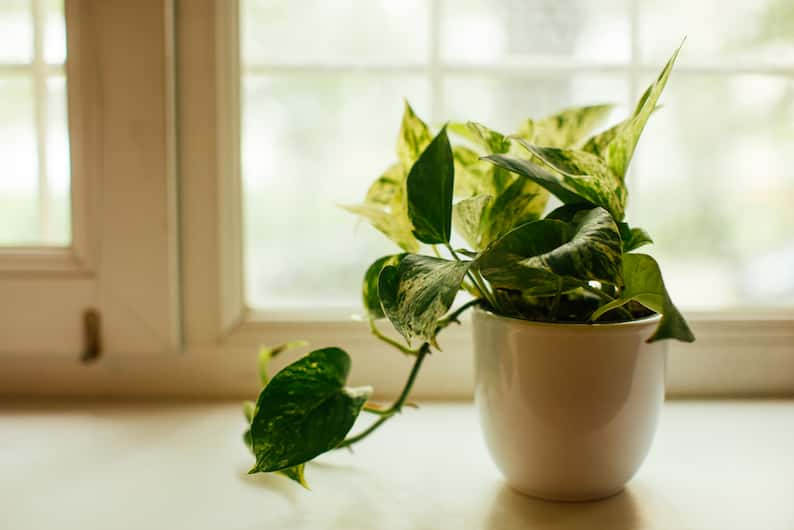
Lighting Requirements:
- Place Pothos cuttings in a location with bright, indirect light.
- Avoid direct sunlight to prevent leaf burn and hindered growth.
- Ideal locations include north or east-facing windows, providing gentle, filtered light.
Using Artificial Lighting:
- Artificial lighting can supplement natural light if needed.
- Choose full-spectrum fluorescent or LED grow lights to mimic natural sunlight.
- Position lights above the Pothos cuttings at the correct distance to prevent damage or heat stress.
Keep in mind that pothos plants need a period of darkness for optimal growth, so it is important to provide them with a consistent light schedule of 12 to 14 hours per day.
Incorporating SZHLUX fluorescent tube grow lights into my indoor gardening setup has been a cost-effective solution for providing ample light to my plants. Their full spectrum illumination ensures that my plants receive the necessary wavelengths for healthy growth, while their energy-efficient design helps keep electricity costs down. However, I’ve noticed that they may not provide as intense light as some other options, requiring closer positioning to plants. Overall, these fluorescent tube grow lights offer a practical and budget-friendly choice for indoor gardeners looking to nurture their plants with sufficient light.
✅ Energy-Efficient: They consume less energy compared to traditional incandescent bulbs, helping to reduce electricity costs.
✅ Full Spectrum: Many fluorescent tube grow lights are available in full-spectrum options, providing plants with the wavelengths of light they need for optimal growth throughout all stages of development.
✅ Low Heat Output: Fluorescent lights produce less heat compared to some other types of grow lights, reducing the risk of burning or overheating plants.
✅ Versatility: Fluorescent tube grow lights come in various sizes and shapes, offering versatility in installation and placement to accommodate different indoor gardening setups.
❌ Limited Coverage: The light coverage area of fluorescent tube grow lights may be smaller compared to other types of grow lights, requiring more fixtures for larger indoor gardening spaces.
❌ Replacement Frequency: Fluorescent tubes have a limited lifespan and may need to be replaced more frequently than other types of grow lights, adding to maintenance costs over time.
❌ Bulky Design: Some fluorescent tube fixtures can be bulky and may take up more space compared to other grow light options, potentially limiting placement options in smaller indoor spaces.
❌ Color Shift Over Time: The color spectrum of fluorescent lights may shift over time, affecting their effectiveness for plant growth and potentially requiring more frequent replacement to maintain optimal light quality.
Monitoring and Adjusting pH Levels for Pothos in Water
To ensure optimal growth and health of your pothos plants in water, it is important to monitor and adjust the pH levels of the water regularly. pH is a measure of the acidity or alkalinity of a solution, and it directly affects the ability of plants to absorb nutrients. Pothos plants prefer a slightly acidic to neutral pH range, ideally between 6.0 and 7.0.

One common question that arises is, “How do I monitor the pH levels of the water?”
The simplest way is to use a pH test kit, which is easily available at garden centers or online. These kits typically include test strips or a liquid solution that you can use to measure the pH of the water. Simply follow the instructions provided with the kit to get accurate readings. It is recommended to test the water at least once a week to ensure a stable pH level.
Another commonly asked question is, “How can I adjust the pH levels if they are too high or too low?”
If the pH is too high (alkaline), you can lower it by adding small amounts of acidic substances like vinegar or lemon juice to the water. On the other hand, if the pH is too low (acidic), you can raise it by adding small amounts of a basic substance like baking soda.
However, it is essential to make these adjustments slowly and in small increments to avoid sudden pH fluctuations that may harm the pothos plants. Remember to retest the water after making any adjustments to ensure that the desired pH range is reached.
Supplementing Nutrients for Optimal Pothos Growth in Water
To ensure optimal growth and health of your pothos plants grown in water, it is important to supplement the necessary nutrients.
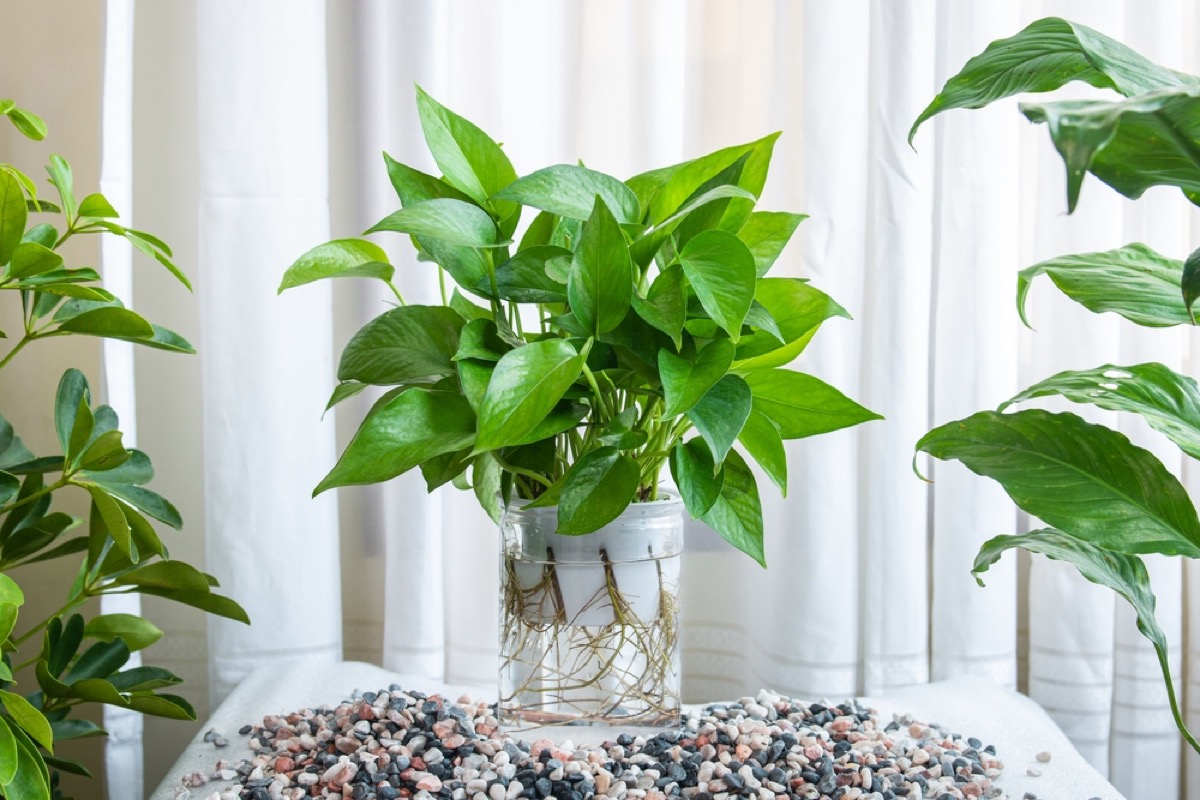
Understanding Nutrient Needs:
- Recognize that even low-maintenance plants like pothos require essential nutrients to thrive.
- Nutrient deficiencies can lead to stunted growth, pale leaves, and overall poor health.
Selecting the Right Fertilizer:
- Choose a balanced, water-soluble fertilizer specifically formulated for houseplants.
- Look for fertilizers containing a mix of nitrogen, phosphorus, and potassium (NPK) in appropriate ratios.
- Opt for a fertilizer that also includes micronutrients like iron, magnesium, and calcium for comprehensive plant health.
Reading Instructions Carefully:
- Before applying any fertilizer, carefully read and follow the instructions provided by the manufacturer.
- Pay attention to recommended dosage, frequency of application, and dilution instructions.
- Follow the manufacturer’s guidelines to ensure proper nutrient supplementation without risking over-fertilization.
By following these steps, you can effectively provide the right balance of nutrients for your pothos in water, promoting healthy growth and vitality.
The following table explains about the supplementing nutrients for optimal pothos growth in water:
| Nutrient Supplement | Application Frequency | Recommended Concentration | Benefits |
|---|---|---|---|
| 1. Liquid Fertilizer | Every 2-4 weeks | Dilute to 1/4 or 1/2 strength | – Provides essential macro and micronutrients. |
| 2. Balanced NPK Ratio | Every 6-8 weeks | Follow product instructions | – Ensures balanced growth and overall health. |
| 3. Epsom Salt (Magnesium) | Monthly | 1 tablespoon per gallon | – Prevents magnesium deficiency symptoms. |
| 4. Calcium Supplement | Every 4-6 weeks | Follow product instructions | – Supports cell structure and root development. |
| 5. Fish Emulsion | Monthly | Dilute as per instructions | – Adds organic matter and promotes lush foliage. |
Preventing and Managing Pests and Diseases in Water-Grown Pothos
Pothos plants grown in water can be susceptible to pests and diseases, just like any other houseplant. To prevent and manage these issues, there are a few key strategies to keep in mind.
| Name | Symptoms | Treatment | Effects |
|---|---|---|---|
| Aphids | Tiny insects on leaves, sticky residue (honeydew), curling leaves | Spray with soapy water, remove affected leaves | Damage leaves, weaken plant |
| Mealybugs | White cotton-like clusters on leaves, stunted growth | Isolate plant, wipe off with alcohol-soaked cotton swab | Weaken plant, reduce growth |
| Root Rot | Wilting, yellowing, mushy roots | Improve drainage, repot in fresh soil | Can lead to plant death |
| Yellowing Leaves | Leaves turning yellow, poor growth | Adjust watering, check for pests | Aesthetic issue, poor health |
| Leaf Spot | Brown or black spots on leaves, yellowing | Remove affected leaves, improve air circulation | Aesthetic issue, may spread |
| Spider Mites | Fine webbing on leaves, yellowing, leaf drop | Spray with water to dislodge mites, isolate plant | Weaken plant, reduce growth |
Remember to monitor your water-grown pothos regularly and take prompt action if you notice any signs of pests or diseases. Proper care will help keep your pothos healthy and thriving! 🌿
Transferring Pothos from Water to Soil Successfully
Once your pothos cuttings have developed a healthy root system in water, you may decide it’s time to transfer them to soil for long-term growth. This process can be fairly simple if done correctly, ensuring the successful transition of your pothos plant.

- Prepare the Soil:
- Use a well-draining potting mix that includes ingredients like perlite or vermiculite. These components promote proper air circulation and water drainage.
- Avoid regular garden soil, as it can become compact and hinder root growth.
- Ensure that the pot you’ll be using has drainage holes to prevent waterlogged roots.
- Remove Cuttings from Water:
- Gently remove the pothos cuttings from the water, being careful not to damage the delicate roots.
- Fill the Pot with Soil:
- Fill a pot with the prepared soil mix.
- Create small holes in the soil for each cutting.
- Plant the Cuttings:
- Place the cuttings in the holes, ensuring that the roots are fully covered with soil while the leaves remain above the surface.
- Press the soil lightly around the cuttings to secure them in place.
- Water Thoroughly:
- After transferring, water the newly potted pothos thoroughly until water drains out of the bottom.
- This helps settle the soil and provides hydration to the plants.
- Light and Moisture:
- Place the pot in a location with bright, indirect light.
- Monitor soil moisture regularly, watering only when the top inch of soil feels dry.
With proper care, your pothos cuttings will thrive in their new soil home. Happy gardening! 🌿
Common Mistakes to Avoid When Growing Pothos in Water
Troubleshooting Common Issues with Pothos in Water
Algae
One common issue that may arise when growing Pothos in water is the development of algae. Algae can quickly take over the water and suffocate the Pothos roots, inhibiting their growth. To troubleshoot this problem, ensure that the Pothos container is not receiving direct sunlight, as this can promote algae growth. Additionally, consider adding a small amount of activated charcoal to the water, as this can help absorb excess nutrients and discourage algae growth. If the algae problem persists, it may be necessary to change the water more frequently or switch to a different type of rooting medium.
yellow leaves
Another frequently asked question when troubleshooting Pothos in water is about the appearance of yellow leaves. Yellowing leaves can be a sign of overwatering or underwatering. To determine the cause, carefully examine the roots and adjust watering accordingly. If the roots appear healthy and white, the plant may be in need of more water. In contrast, if the roots are brown and mushy, the Pothos may be suffering from root rot due to overwatering. In this case, it is crucial to allow the roots to dry out before resuming a watering routine. Additionally, ensure that the container has proper drainage to prevent waterlogged roots in the first place.
Exploring Creative Display Options for Water-Grown Pothos
When it comes to displaying water-grown pothos, there are plenty of creative options to explore.

- Transparent Containers:
- Opt for glass vases or jars to showcase the roots of your pothos. The transparency adds an aesthetic touch and allows you to observe root development.
- Experiment with different container sizes and shapes. Grouping multiple containers together at varying heights can create an eye-catching focal point.
- Decorative Elements:
- Enhance the visual appeal by adding decorative stones, pebbles, or marbles to the bottom of the container. These materials not only look attractive but also provide support for the stems.
- Consider layering the base with different textures or colors for added interest.
- Unique Holders and Stands:
- Place your water-grown pothos in decorative holders or stands. Macramé hangers, terrariums, or wall-mounted systems can elevate the overall look.
- Get creative with placement – hang them near windows, on shelves, or even as part of a living wall arrangement.
Remember, the beauty of water-grown pothos lies not only in its lush foliage but also in the imaginative ways you can display it. Enjoy creating your stunning centerpiece! 🌿
Watch video for more information:
FAQ
Can all varieties of pothos be grown in water?
Yes, most varieties of pothos can be grown successfully in water. However, some varieties may be more suitable for water propagation than others.
Can I use tap water for growing pothos in water?
Tap water can be used, but it’s important to let it sit for 24 hours before using it to allow any chlorine or other chemicals to dissipate. Alternatively, you can use filtered or distilled water.
How often should I change the water for my water-grown pothos?
It is recommended to change the water every two to four weeks or whenever it becomes cloudy or foul-smelling. Fresh water helps prevent the growth of harmful bacteria and keeps the roots healthy.
Do I need to use any fertilizer for my pothos in water?
Pothos can benefit from occasional fertilization with a diluted liquid houseplant fertilizer. It is best to follow the instructions on the fertilizer packaging for proper application.
Can I grow pothos in water permanently, or should I eventually transfer it to soil?
Pothos can be grown in water indefinitely, but transferring it to soil can provide more stability and nutrients for long-term growth. It is a personal preference whether to keep it in water or transfer it to soil.
Can I propagate pothos from a single leaf cutting in water?
While it is possible to propagate pothos from a single leaf cutting in water, it is generally more successful to propagate pothos from stem cuttings with at least one node. This ensures the development of roots.
How long does it take for pothos cuttings to root in water?
Pothos cuttings typically start developing roots within two to four weeks. Patience is key, as some cuttings may take longer to root than others.
Can I place my water-grown pothos in a vase or decorative container?
Yes, you can display your water-grown pothos in a vase or decorative container. Just ensure that the container has enough room for the roots to grow and that it provides support for the plant.
How can I prevent pests and diseases in my water-grown pothos?
Regularly monitor your pothos for signs of pests or diseases, such as yellowing leaves or webbing. If an issue arises, you can try using insecticidal soap or horticultural oil to control pests, and fungicides for fungal diseases.
Can I propagate pothos in water during any season?
Pothos can be propagated in water throughout the year, but they may root more quickly during the warmer months. Nonetheless, successful propagation is possible regardless of the season.

Studied Agricultural Engineering-Plant Protection at University of California, Davis.
Head of Content writing team at Southelmontehydroponics.com

